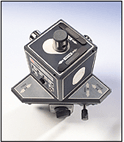From paper towels, tissues and filter papers to wallpapers, packing papers and corrugated boxes, many paper products can only fulfill their expected functions satisfactorily if they demonstrate adequate wet strength. What is a wet strength? The ability of paper to maintain a pre-determined strength—up to 50% of the dry paper strength, depending upon the application—after being saturated with a water solution is termed “wet strength.”
Wet strength is especially important to the adequate performance of paper bags and containerboard products that are expected to transport foods or beverages which will cause the packaging to get wet due to the moisture content of the food itself, changes in temperature that induce melting and condensation, or environmental exposure to moisture. Minimizing the risk of packaging failure is critical to maintain product integrity throughout the handling timeline and to avoid risk to ultimate customer satisfaction.
Development of Wet Strength Resins
Originally, wet strength enhancement was accomplished by adding resorcinol-formaldehyde products to the starch used in the papermaking process, but these additives were difficult to prepare and had other negative implications. Requiring acid pH conditions and the presence of alum in the papermaking process, formaldehyde-based resins, however, are still widely used for applications where extremely high wet strength is required.
Over the years, technology involving the use of resins to provide wet strength to paper goods has become more sensitive to reliability and production-time concerns. Currently, ketone formaldehyde are used to deliver wet strength and to mitigate the problems associated with the high temperatures at which the starch would gel as well as unstable viscosity issues. These wet strength resins are known as “thermosetting,” which means they mix with the starch and harden (gel) with the application of heat.
Watch Those Ratios!
The efficacy of wet strength resins varies from manufacturer to manufacturer and is a function of several content-related ratios.
Percent of solids content—Low solid content yields poor performing adhesive, a problem that cannot be overcome simply by adding more resin to the adhesive.
* Percent of free formaldehyde present—Some formaldehyde reduction efforts may increase attraction to water, defeating the purpose of the wet strength resin technology.
* Length of time to gelatinize—Resins should facilitate a finite, short gel time to maximize water resistance.
* Resin reactivity with starch—Good chemical reactivity enhances the production process
* The take-away reminder here is that cheaper is not always better!
For a manufacturer of highly effective and widely used wet strength resins, visit rapidbond.net. A well-established, multinational expert in the corrugated and packaging industry, Rapid Bond delivers knowledgeable, professional client care and only the best in systems, equipment and chemicals for all of your packaging needs.


